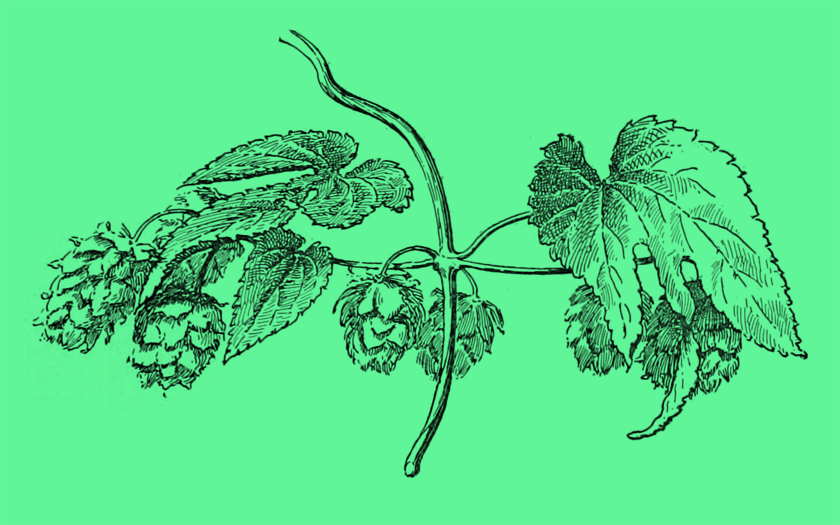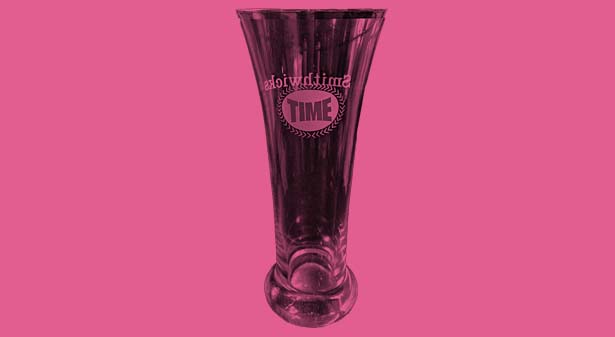Visit the Boak and Bailey's Beer Blog site
Every Saturday we round-up the best writing about beer from the past 7 days. This week we’ve got pessimism, optimism, and pure Belgianness.
First, there’s been a flurry of news about brewery closures and changes:
 Will Hawkes has shared the January edition of his London Beer City newsletter online. It’s a great read from beginning to end with the provocative title ‘Is this a golden age for London pubs?’
Will Hawkes has shared the January edition of his London Beer City newsletter online. It’s a great read from beginning to end with the provocative title ‘Is this a golden age for London pubs?’
Given the current economic pressures, it’s worse now than ever. But pubs closing is not a phenomenon just of the last 20 years; they’ve been shutting since the Victorian era, as Mark Girouard pointed out in his superb 1975 book Victorian Pubs. “London is full of dead pubs,” he wrote back then; “In Oxford Street between St Giles Circus and Marble Arch there were 19 pubs in 1890; today there is only one.” (That pub, then the Tottenham and now The Flying Horse, is still there, btw: it’s worth a visit for its classic 1890s interior)… You cannot discuss the decline of pubs without acknowledging the huge changes in society that have taken place, and the new and varied options open to ordinary people that didn’t exist in 1890 or even 1980 (the pre-cheeky Nando’s era, if you like). So much of the hand-wringing over pubs is really disgruntlement at how society has changed – which is all very well, depending on your perspective, but it doesn’t get us very far.
His diary of a weekly visit to a posh pub in Dulwich is fascinating, too, and something all of us habitual pub goers could try. Perhaps we’ll keep a Swan With Two Necks diary for a month or two.
 At Jim’s Substack Jim Cullen has written about a small crawl around some classic Manchester pubs with old friends from work, and the nature of old friendships:
At Jim’s Substack Jim Cullen has written about a small crawl around some classic Manchester pubs with old friends from work, and the nature of old friendships:
The last few months – on a personal level – have been a bit bleak – so, when I spoke to one of my work heroes (my colleague Phil) about getting my old Boss (Mick) out, I was delighted that he took the reins and organised it… so we found ourselves, on pay day, on Liverpool Road, just off Deansgate in Manchester…. Phil noticed me walking in and I was quickly furnished with a pint of Knack (Mild) by Thornbridge. Lightly roasty, creamy and smooth with ever such a light chocolatey note, it was a beautiful reminder that it doesn’t take a old family brewer to brew heritage styles. I love Mild.
 Senne Eylenbosch with a massive rabbit, of course. SOURCE: Belgian Smaak/Cliff Lucas.At Belgian SmaakBreandán Kearney profiles Senne Eylenbosch and his lambic blendery, Het Boerenerf, which has a romantic back story:
Senne Eylenbosch with a massive rabbit, of course. SOURCE: Belgian Smaak/Cliff Lucas.At Belgian SmaakBreandán Kearney profiles Senne Eylenbosch and his lambic blendery, Het Boerenerf, which has a romantic back story:
At the 2011 Kasteelfeest—when Eylenbosch was 15 years-old—his parents were busy scooping ice-cream and making pancakes, so Eylenbosch sneaked off to the tent next door, where Sidy Hannsens of Geuzestekerij Hannsens pulled him aside and gave him a glass of Hannsens Oude Kriek. She even gave him a five euro note to buy a Kriek from another producer so he could understand how “a real one” tasted against other versions. It was a small gesture that made a big impression on a young Eylenbosch… Growing up in the Zenne valley, Lambic was always on Eylenbosch’s periphery. The building right next door to where he lived, now a block of apartments, was once a Lambic brewery dating back to the 1860s and owned for a period by his own bloodline. “It was a big scar in the family,” he says of the family’s decision to stop Lambic production in the 1960s. “It wasn’t commonly talked about. It’s still not.”
 It’s fascinating to see the big problems of European history reflected in the smaller local story of controversy around the Upper Austrian hop market in the 19th century. As Andreas Krennmair writes, the price and provenance of hops was a hot issue, and tangled up with antisemitism:
It’s fascinating to see the big problems of European history reflected in the smaller local story of controversy around the Upper Austrian hop market in the 19th century. As Andreas Krennmair writes, the price and provenance of hops was a hot issue, and tangled up with antisemitism:
An 1869 article claimed that hop growers were only paid 60 fl. for their hops, while at the same time, Upper Austrian hops were traded in Saaz for 90 to 100 fl. This is blamed specifically on Jewish hop traders, who the anonymous author accuses of arranging with each other, thus controlling the prices. The same author suggests that hop growers should form an association to centrally control the sales of Upper Austrian hops, thus having more leverage to dictate prices… This article was immediately contradicted by an expert.. The editors added a note to the letter, claiming that the author, although only anonymously signed as “an expert”, was a Jewish hop trader… About a month later, another article was published in a different newspaper, denouncing the initial reports as wrong, not only correcting the wrong price information, but also scalding the use of defamatory, antisemitic language.
 SOURCE: Liam K/IrishBeerHistory.We haven’t seen a flared ‘pilsner glass’ in the wild for years – but we might if we go to Ireland, reports Liam K at IrishBeerHistory, in the latest post in his ‘100 Years of Irish Brewing in 50 Objects’ series:
SOURCE: Liam K/IrishBeerHistory.We haven’t seen a flared ‘pilsner glass’ in the wild for years – but we might if we go to Ireland, reports Liam K at IrishBeerHistory, in the latest post in his ‘100 Years of Irish Brewing in 50 Objects’ series:
It is an elegant form, if a little top-heavy in appearance when full, although in truth this is balanced by having a thick and heavy base, plus it’s incredibly tactile and extremely practical to drink from, with the width of the mouth of the glass perfectly proportioned for either sipping or gulping its contents. This example from the Smithwick’s brewery in Kilkenny for their forgotten and (ironically) timeline purged Time beer brand has all of those elements, plus a wonderful, thick gold band around its rim that heightens its graceful beauty… Time ales were launched by Smithwick’s in 1960 with the aim of revitalising an ageing brand for more modern times and to celebrate their (so-called) 250th anniversary… The launch meant a complete rebrand for most of the Smithwick’s beers with a new logo, beer labels, coasters and other ephemera, plus of course glassware. Branding on glasses was a relatively new idea here, and Time was probably one of the first beers in Ireland to have its own range of branded glassware.
Finally, from Instagram, it’s Nat Ainscough again, who has been posting pub photos from Glasgow.
For more good reading check out Stan Hieronymus’s round-up from Monday and Alan McLeod’s from Thursday.
News, nuggets and longreads 17 February 2024: Running Wild originally posted at Boak & Bailey's Beer Blog
More...
Will Hawkes has shared the January edition of his London Beer City newsletter online. It’s a great read from beginning to end with the provocative title ‘Is this a golden age for London pubs?’
At Jim’s Substack Jim Cullen has written about a small crawl around some classic Manchester pubs with old friends from work, and the nature of old friendships:
Senne Eylenbosch with a massive rabbit, of course. SOURCE: Belgian Smaak/Cliff Lucas.At Belgian SmaakBreandán Kearney profiles Senne Eylenbosch and his lambic blendery, Het Boerenerf, which has a romantic back story:
It’s fascinating to see the big problems of European history reflected in the smaller local story of controversy around the Upper Austrian hop market in the 19th century. As Andreas Krennmair writes, the price and provenance of hops was a hot issue, and tangled up with antisemitism:
SOURCE: Liam K/IrishBeerHistory.We haven’t seen a flared ‘pilsner glass’ in the wild for years – but we might if we go to Ireland, reports Liam K at IrishBeerHistory, in the latest post in his ‘100 Years of Irish Brewing in 50 Objects’ series:




 Reply With Quote
Reply With Quote